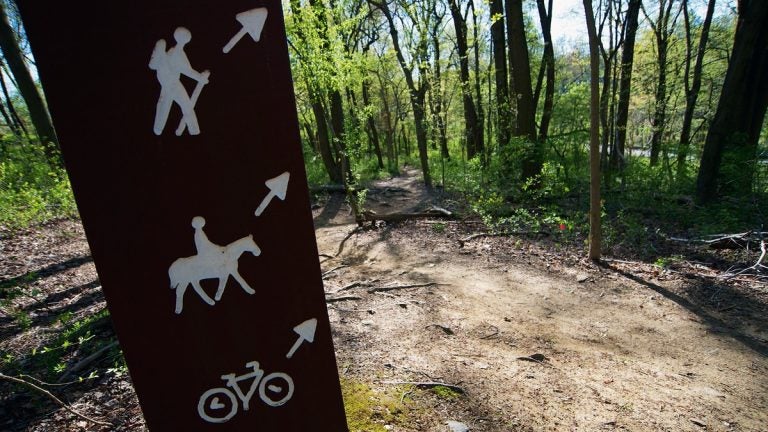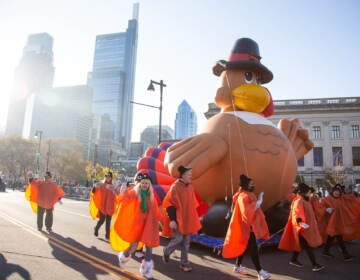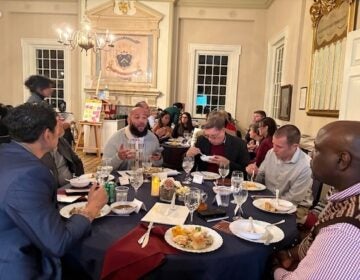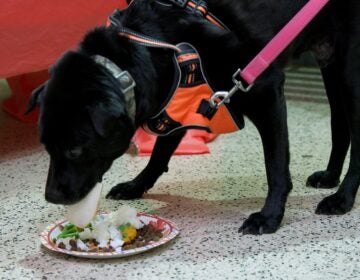Friends of Wissahickon announces future plans for sustainability effort

A sign pointing to the Wissahickon trails. (Bas Slabbers/for NewsWorks, file)
The Friends of the Wissahickon announced last week that key strides in improving Fairmount Park’s accessibility and wellness were made this year as part of their Sustainable Trails Initiative.
In partnership with Philadelphia Parks and Recreation, the Sustainable Trails Initiative is a multi-year project to make the 50 miles of trails in the Wissahickon Valley a physically and socially sustainable system for all park users.
At a public meeting held last week, FOW Project Manager Henry Stroud said that sustainable trails revolve around four key concepts: Ecology, equity, economy, and livability.
“The quality of the habitat, the quality of the water, and people’s enjoyment of the park are all related to the quality of the trails within the park,” he said.
A progress report
Founded in 1924, FOW has grown to become a 1,600 member, nonprofit organization tasked with stewardship of the park.
STI had its roots in a study released in 2006, with a trail assessment that suggested trail construction and repair, capital infrastructure, and stormwater management. Since then, approximately 10 miles of trails have been built, almost 9.5 acres of land has been reclaimed by the narrowing of trails, and another 10 miles of trails are maintained annually. Shroud added that much of this work is done by volunteers.
Stemming from a recent update of the 2006 plan, the park was divided into 15 planning areas. This year, attention was paid to areas around Valley Green Road, Andorra, Rittenhousetown, and Kitchen’s Lane.
At Valley Green, FOW joined forces with the Philadelphia Water Department to stabilize the stream channel and restore the parking lot. Stroud said that the channel is now equipped to handle “massive” amounts of water. In Andorra, two trails were rehabilitated, as was the so-called “Tree House.”
At Kitchen’s Lane, another two trail projects were undertaken, with a new trail connections added and another rerouted. To complete the projects, about 50 tons of stone were brought in from Roxborough and Chestnut Hill. In Rittenhousetown, FOW undertook at trailhead stabilization.
Ultimately, it meant 336 bags of trash removed, 361 plantings, 3,851 volunteer hours, and the investment of almost $375,000 to date this year.
Three-part initiative
The organization is also in the first year of a multi-year strategic plan. As explained by FOW Executive Director Maura McCarthy, the initiative runs from 2013 to 2015 and balances organizational prerogatives with public interest. It includes three major components:
• Sustainable Trails Initiative.• New progress in habitat and water quality.• Broadening the constituency and scope through branding.
The first part consists of completing 80 percent of trail work by 2018, along with performing ongoing maintenance. A park user safety initiative is also included, as is the training of volunteers.
The second part attempts to address lingering water quality issues regarding the Wissahickon Creek and alleviate pressure placed on the park’s forest by ongoing development around its edges.
The final aspect would assist with membership and fundraising for the organization and involve more park users in the life of the park and the health of Wissahickon. In addition, the marketing efforts would share FOW’s vision beyond the immediate community by working toward regional and national recognition.
What’s coming next
Looking ahead, Shroud said he felt there were “big things on the horizon” for 2014 and beyond.
Most significant to the average park user will be the installation of new signage, design of which was recently approved by PPR. Over the next two years, FOW will install newly-designed information kiosks and trail markers referred to as “tombstone.”
While clearly showing trail locations and designations, the tombstones will be designed to have low visual impact. In response to popular request, the overall number of signs would be reduced from 250 to 175, thus allowing visitors to more easily “get lost” in the park.
In keeping with their interests to integrate social media with their new emphasis on marketing, McCarthy said that they are considering the installation of QR codes on the new signs. However, such use would require what she described as “back-end” issues, such as the resource-intensive generation of content for the codes and spotty connectivity in the park.
Reception to the plans seemed overwhelmingly positive a the meeting.
Willow Grove resident Ruth Pfeffer complimented the FOW leaders on the transformative effects that they have had on the park, signaling specific approval for the planned branding efforts.
“It’s awesome that you’re going to start to toot your own horn,” said Pfeiffer.
WHYY is your source for fact-based, in-depth journalism and information. As a nonprofit organization, we rely on financial support from readers like you. Please give today.




